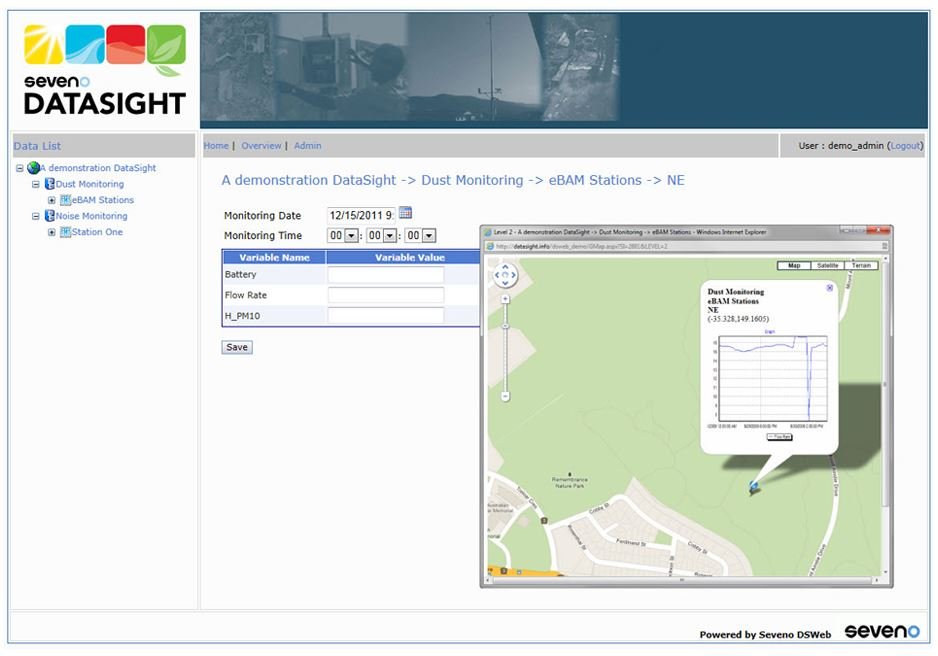Seveno Datasight
Environmental data management
Datamine is in use across the world by mining organisations, water authorities, shipping ports, local governments and environmental consultancies.
Data Collection
Collect and store environmental and hydrometric data from a variety of sources, such as data loggers, Laboratory Information Management Systems (LIMS), telemetry systems and manual data entry forms.

Data Integration
Integrate your environmental database with other systems, (GIS, SCADA, SAP etc)

Data Security
Ensure security of your data via flexible user permission settings and detailed data
audit trails.

Automated Reporting
Configure automatic, scheduled reporting.
Enables key stakeholders to create or access relevant reports.

Data Integrity
Ensure data integrity, validity and compliance via advanced data analysis tools.
Web Browser Access
Disseminate your environmental data and reports via web browser connectivity.

Key Facts
- DataSight is available as a desktop version for individual users / small companies, or a client-server (enterprise) solution
- Datasight Suite - the Enterprise solution - consists of DataSight Administrator and DataSight Service Manager program
- DataSight Enterprise requires Microsoft SQL Server Management Studio or similar for management of large datasets
- DataSight will link to ArcGIS and MapInfo Pro, and integrates with MapInfo-Discover
DS Web
- DataSight is available as a desktop version for individual users / small companies, or a client-server (enterprise) solution
- Datasight consists of DataSight Administrator and DataSight Service Manager program
- DataSight Enterprise requires Microsoft SQL Server Management Studio or similar for management of large datasets
- DS Web is available as an optional extra for distribution and reporting of data via a web browser.
- DS Web is integrated with Google Maps, with datasheet, graphical and document views.
- DS Web allos manual data entry and file import.
Current Release
- DataSight v3.2 was released in October 2017. New features include support for an internal DataSight Web Browser, the ability to import any file into DataSight’s Documents section, the introduction of a reference variable series to graphical flagging, and much more. DataSight 3.2 users will experience faster processing times and enhanced performance as a result of critical bug fixes.


